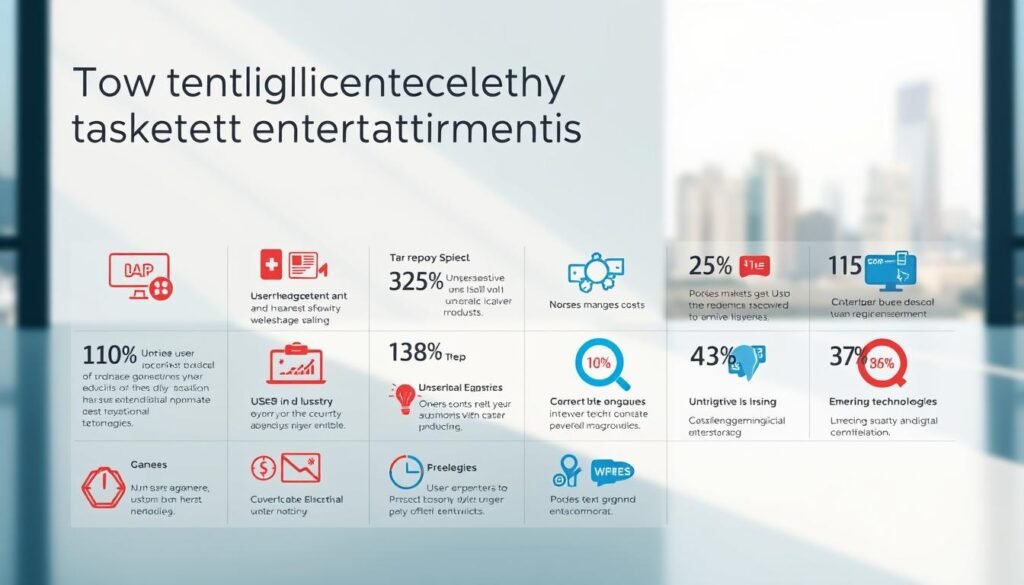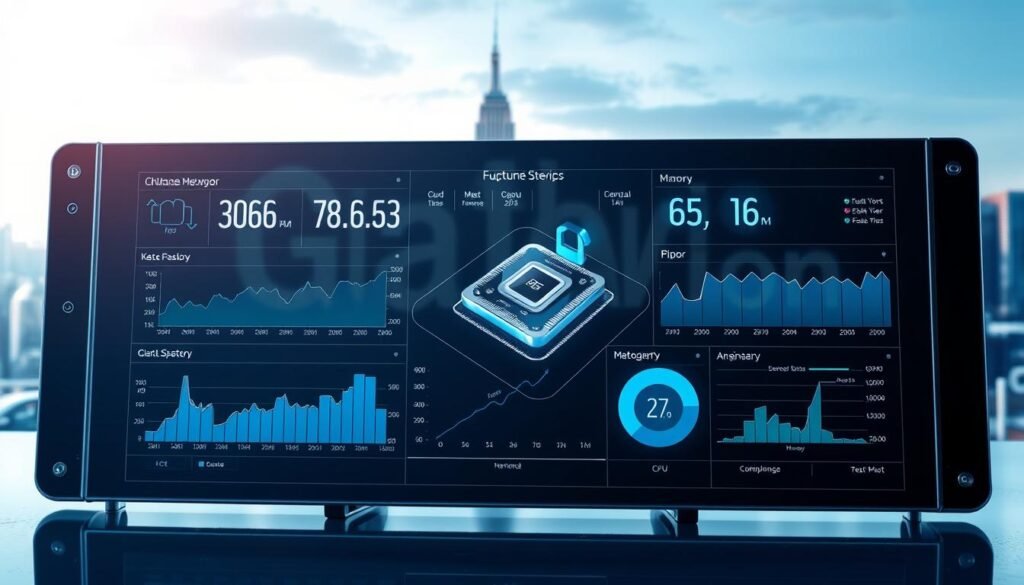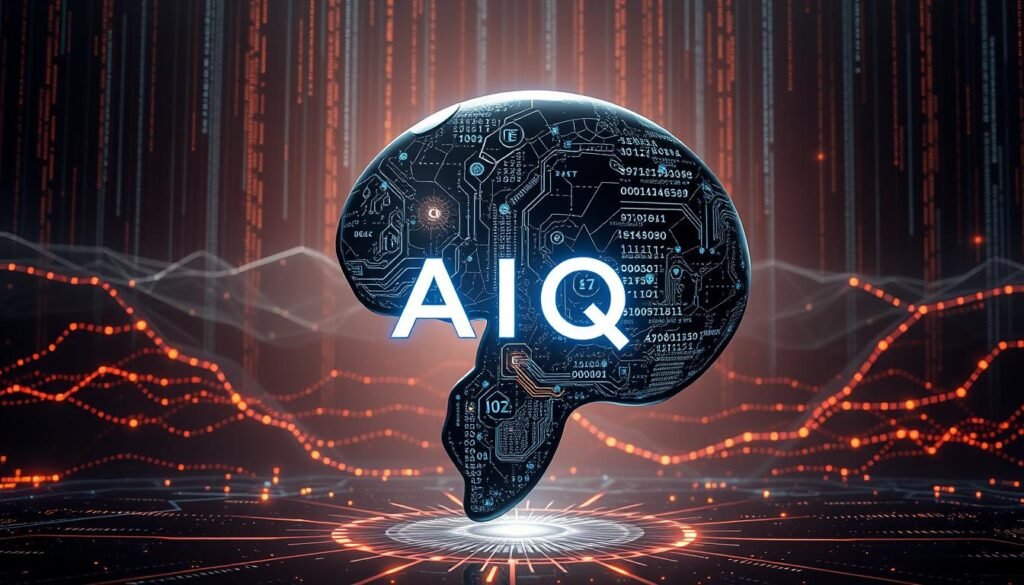Question: Could a single fund give you curated exposure to the companies that make streaming smarter and more reliable?
Bienvenue — you want premium digital entertainment exposure and clear information. This guide cuts through the buzz. It explains how $AIQ links to leaders in artificial intelligence, big data, and cloud platforms that power streaming and content delivery.
We present the fund’s essentials: etfs structure, 30-day SEC yield, semi-annual distributions, and current NAV versus market price so you see how it trades in the market today.
Expect concise, expert guidance. Learn how the fund maps to the Indxx Artificial Intelligence & Big Data Index, why a developed-markets, technology-forward approach matters, and how data-driven recommendation engines improve viewer experience.
Key Takeaways
- Get a clear snapshot of the fund’s NAV, market price, and expense ratio.
- Understand the passive, physical replication method and index mapping.
- See how artificial intelligence and data boost streaming quality.
- Know the fund’s market role for a technology-forward entertainment thesis.
- Find concise information to evaluate fit in your portfolio quickly.
Discover the Product: Global X Artificial Intelligence & Technology ETF Overview
This ETF gives clear, investable access to companies building the systems behind modern artificial intelligence and streaming.
ETF objective and index
ETF objective and index: Indxx Artificial Intelligence & Big Data Index
The fund tracks the Indxx Artificial Intelligence & Big Data Index using passive, physical replication. It aims to mirror the index performance through a disciplined, rules-based process.
What the fund invests in
What $AIQ invests in: AI, big data, and enabling technology companies
Exposure focuses on developed-market companies involved in AI use cases, big data analytics, and related hardware. The portfolio includes platform firms, chipmakers, and software providers.
- Market-cap weighting with semi-annual re-weighting and annual reconstitution.
- At least 80% of assets invested in index constituents; the fund is non-diversified.
- Inception: May 11, 2018. Issuer/Advisor: Global X; Distributor: SEI Investments Distribution Co.

Why Choose $AIQ for AI, Big Data, and Streaming-Led Growth
Invest in the builders of intelligence technology and cloud platforms that shape modern digital entertainment.

Positioning: Exposure to artificial intelligence, big data, and cloud-driven platforms
AIQ targets developed-market innovators—platform leaders and hardware enablers such as Alphabet, Apple, Meta, and Broadcom peers.
Benefit: You gain concentrated access to companies that power recommendation engines, ad targeting, and streaming delivery.
Use cases: From digital entertainment and streaming to enterprise AI adoption
Big data and real‑time analytics reduce buffering and personalize libraries. This improves viewer retention and ad monetization.
Cloud migration and edge inference enable smoother playback and interactive features that scale globally.
Investor fit: Thematic technology ETF for long-term growth seekers
This technology etf suits investors seeking a focused sleeve without stock-picking. It offers the convenience of etfs with targeted scope.
- Concentrated exposure to platform and chip leaders.
- Structural growth from subscription, ad, and commerce monetization.
- Disciplined, index-driven rebalancing to stay aligned with the market.
| Focus | Primary Benefit | Representative Companies | Investor Type |
|---|---|---|---|
| Artificial intelligence | Personalization & recommendation | Alphabet, Meta | Long-term growth seekers |
| Big data | Real-time quality & insights | Amazon, Netflix | Thematic allocators |
| Cloud & infrastructure | Scalability & edge inference | Apple, Broadcom | Buy-and-hold investors |
Key Facts at a Glance
Quick facts below give a clear snapshot of structure, size, and trading details. Use this information to compare funds and plan buy or sell execution.

Fund setup and management style
Inception: May 11, 2018. The fund is open‑ended with passive, physical replication. It is non‑diversified and seeks to closely track the underlying index.
Assets, shares, and fees
Net assets (AUM): approximately $4.76 billion (as of Sep 8, 2025). This size signals strong investor interest in artificial intelligence and data themes.
Shares outstanding: 103,410,002. Expense ratio: 0.68% — a balance between targeted exposure and operational efficiency.
Trading identifiers and holdings
Ticker / Exchange: AIQ — Nasdaq. CUSIP / ISIN: 37954Y632 / US37954Y6326.
Number of holdings: 88. 30‑day median bid‑ask spread: 0.02%, supporting efficient trading near NAV and price.
“Transparent structure and tight spreads help you align trading with the fund’s net value.”
- Advisor: Global X Management Co. LLC; Distributor: SEI Investments Distribution Co.
- Physical replication means you own the underlying securities rather than synthetic exposures.
- Useful as a satellite allocation alongside broader etfs and funds for diversifying technology exposure.
| Metric | Value | Why it matters |
|---|---|---|
| AUM (assets) | $4.76B | Size indicates market adoption and liquidity |
| Shares outstanding | 103,410,002 | Helps gauge free float and trading depth |
| Expense ratio | 0.68% | Costs relative to performance potential |
| Holdings | 88 | Diversified within the artificial intelligence and data theme |
Performance and Yield Snapshot
Compare recent returns, NAV dynamics, and payout metrics to understand the fund’s real-world value.
Recent returns:
- 1-year: roughly 22.8–23.6% — strong short-term performance.
- 3-year: roughly 28.2–29.0% annualized.
- 5-year: about 16.4–17.1% annualized.
- Since inception: near 16.6–17.1% depending on measurement.
NAV vs. market price:
The NAV sits at $46.02 and the market price at $46.11, implying a modest ~0.20% premium to NAV. Keep an eye on intraday price moves; comparing price to NAV helps you avoid paying excess premiums when trading.

Distribution and yield details
Distributions are semi-annual. The 30-Day SEC yield is -0.03%, while the indicated dividend yield is about 0.13% with an ex-date of June 27, 2025.
“This intelligence technology ETF blends growth-focused stocks with disciplined index methodology to deliver performance and manageable payouts.”
For investors: Use these performance and yield signals to set expectations. The emphasis here is growth, not high income—align position size with your objectives and review assets and size for trading depth.
What’s Inside the Fund: Sectors, Regions, and Top Holdings
Review the mix of sectors and leading positions to understand the fund’s exposure to modern tech trends.
The portfolio is heavily weighted to Information Technology at 70.6%. Consumer Discretionary and Communication Services add platform and demand exposure at about 10.7% and 10.3% respectively.
Top positions and market footprint
Top stocks include Alphabet (3.59%), Broadcom (3.55%), Alibaba (3.36%), Tencent (3.30%), Apple (3.24%), Meta (3.08%), Netflix (3.08%), Samsung Electronics (3.06%), Tesla (3.04%), and Amazon (3.01%).
The weighted average market cap is roughly $838B. Holdings blend U.S. and developed‑market Asia champions to deliver a global artificial intelligence reach.
Why this mix matters
- Data-centric companies power personalization and content discovery.
- Chip and cloud leaders enable training and edge inference for reliable streaming.
- The fund uses market‑cap weighting with semi‑annual re‑weighting and annual reconstitution to keep the shares aligned with liquidity and size.
“A concentrated, developed‑markets approach captures the core of AI commercialization while easing some geopolitical risk.”
Valuation, Risk, and Fundamentals
We break down price multiples, volatility, and trading friction so you can judge current value and risk for this thematic sleeve.
Fundamentals: P/E, P/B, and ROE
The fund trades at a 2025 P/E of 24.14, down from 28.12 in 2024. This suggests earnings are catching up with growth expectations.
P/B sits near 4.17 in 2025 versus 4.85 a year earlier. Return on equity is strong at 18.60%, reflecting profitable, scalable businesses in the basket.
The weighted average market cap is about $837,992M, showing large-cap stability among the underlying stocks.
Risk metrics: beta and volatility
Beta versus the S&P 500 is 1.21, and versus the NASDAQ-100 it is 1.11. That places the fund above broad market sensitivity but close to growth indices.
Standard deviation is ~21.10%. Expect equity-style swings typical of innovation-led funds.
Liquidity and costs: spread and trading notes
Liquidity is solid: 30-day median bid-ask spread is ~0.02%. That helps keep transaction costs low for most orders.
Price discipline matters. Use limit orders on larger trades and scale in to manage slippage. Review assets and average daily volume before placing sizeable blocks.
“Fundamentals plus performance context help you decide if the current price aligns with your goals.”
| Metric | Value | Implication |
|---|---|---|
| P/E (2025) | 24.14 | Growth multiple; earnings catch-up potential |
| P/B (2025) | 4.17 | Premium for intangible assets and scale |
| ROE | 18.60% | Healthy profitability across holdings |
| Beta (vs S&P 500 / NASDAQ-100) | 1.21 / 1.11 | Above broad market, aligned with tech indices |
| Std. Deviation | 21.10% | Typical thematic equity volatility |
| 30‑day Median Spread | 0.02% | Strong liquidity for efficient trading |
How to Invest and Trade $AIQ in the United States
Practical trading steps help you treat an ETF like a stock while keeping fund-level nuances in view.
Primary exchange, options availability, and trading hours
Primary exchange: Nasdaq. The ticker is AIQ, simple to recall for active traders.
Options and shorting are available, which lets you use covered calls or protective puts around your shares. Trading follows regular U.S. market hours; plan orders accordingly.
Placing orders: Using brokers, market vs. limit orders, monitoring NAV
Use limit orders for tighter control of execution price, especially at open and close. Market orders can fill quickly but may widen your effective cost.
Compare intraday price to the latest net asset value (NAV) estimate to avoid paying an elevated premium. Recent data: NAV ≈ $46.02; market price near $46.39–46.42, a ~0.20% premium.
- Trade like a stock: place orders on Nasdaq under AIQ during market hours.
- Options: available for income or hedging strategies.
- Liquidity: average volume ~978k supports efficient execution for most investors.
- Dollar-cost averaging: useful when building positions to smooth entry price.
“Monitor fund news, rebalances, and net flows—these can shift spreads and short-term dynamics.”
| Item | Detail | Why it matters |
|---|---|---|
| Exchange / Ticker | Nasdaq / AIQ | Easy routing and high visibility |
| Options / Short | Yes / Yes | Enables hedging and income strategies |
| Avg. daily volume | ~978,000 | Supports tight spreads and execution |
| NAV vs. market | $46.02 vs. $46.39–46.42 | Watch premium (~0.20%) when placing trades |
| Distribution | Semi-annual | Plan around ex-dates for income-sensitive trades |
Conclusion
Conclusion
For investors who want a clear path into artificial intelligence and data-driven entertainment, this fund offers a focused, tradable option.
It blends platform giants and enablers into a single technology etf with passive, physical replication, semi‑annual distributions, and a 0.68% expense ratio.
The portfolio targets global artificial intelligence leaders—Alphabet, Broadcom, Apple, Meta, Netflix and others—while keeping sector weight concentrated in Information Technology.
Use this fund alongside broader funds to round out your tech exposure. Monitor theme-related news and product updates; innovation cycles can change momentum fast.
Bottom line: disciplined indexing, transparent data, and concentrated exposure make this fund a practical route to participate in the AI transition with clarity and confidence.



